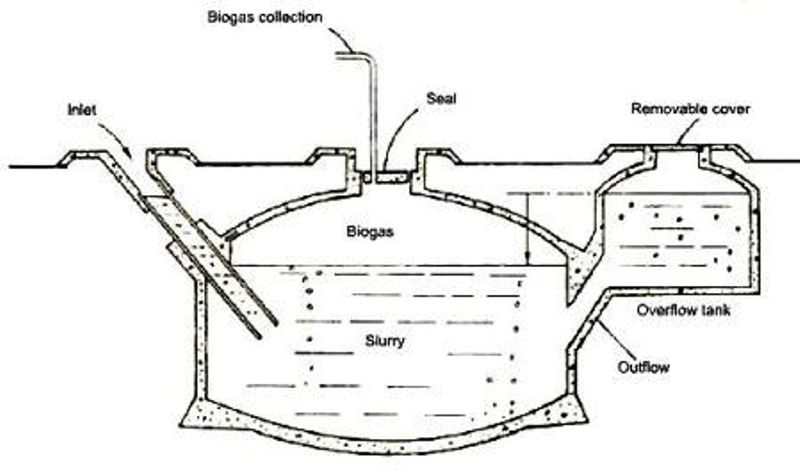Biogas is a mixture of methane (CH4), carbondioxide (CO2) and vaporised water. Sometimes it contains other gasses like nitrogen gas (N2), hydrogen sulfide (H2S) and hydrogen gas (H2). Methane, which is an odorless gas, is the major component of the mixture. Its amount depends on the material put in the digestor. Like all biological processes, the process is temperature dependent. The conversion rates are higher at higher temperatures.
Under anaerobic conditions, organic matter is not oxidised but digested. Microorganism called methanogens, produce methane gas. The production of biogas is a proces of four stages. Hydrolysis, acidogenesis, acetogenesis and methanogenesis. First the input material is broken down into sugar, fatty acids and amino acids. These are then further broken down in the second and third step. The fourth step is the conversion of these products into methane, carbon dioxide and water. If the last step is slowed down, the volatile fatty acids produced in phase one will built up and cause a very bad smell. Unlike many others, this process does not leave residues which are poisonous to the process itself.
